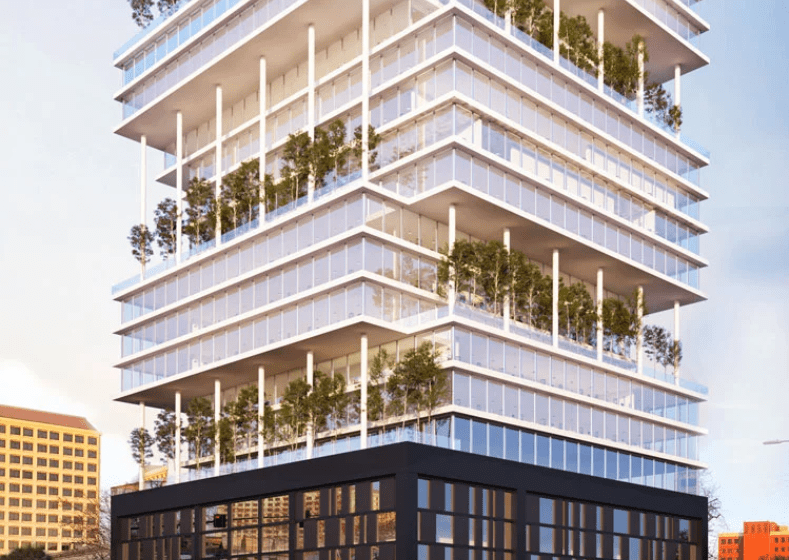Matthew Reed, Policy Manager at Silicon Valley at Home, explains that rents are more stable in lower-end properties, because there aren’t enough to meet the increased demand for less expensive apartments. “The difference between Class A luxury apartments and the experience that they’ve been having in terms of vacancy rates and rents going down is very different than a still relatively tight bottom-ended market where lower-income folks have not seen the same level of decreases of rent,” Reed said. “That’s a real concern because that’s where the economic hardship is greatest. We don’t believe that as of yet, the pandemic and recession has provided relief in rents where the need has always been the greatest.”[spacer height=”20px”]
BY: Lloyd Alaban┃San Jose Spotlight
PUBLISHED: December 18, 2020[spacer height=”20px”]
Apartment rent prices in San Jose are falling, but that might not do a whole lot to help renters struggling to make ends meet in the pandemic-slammed local economy.
The average rent in 2020 was $2,531 a month, according to a new report from apartment finder service RentCafé. That was down 7.7% from last year, one of the steepest drops among the nation’s 30 largest cities.
But much of that decline is due to a fall in occupancy levels in the higher-end portion of the apartment market, said Doug Ressler, a senior analyst and manager of business intelligence at Yardi Systems, Inc., the parent company of RentCafé. Rather than leaving the area, many of the people moving out of those luxury apartments, so-called Class A properties, are seeking to move into places like single-family homes or moving into their second residences because they can afford it.
Meanwhile, rents are more stable in lower-end properties, because there aren’t enough to meet the increased demand for less expensive apartments, said Matthew Reed, policy manager at Silicon Valley at Home, a nonprofit affordable housing advocacy group.
“The difference between Class A luxury apartments and the experience that they’ve been having in terms of vacancy rates and rents going down is very different than a still relatively tight bottom-ended market where lower-income folks have not seen the same level of decreases of rent,” Reed said. “That’s a real concern because that’s where the economic hardship is greatest. We don’t believe that as of yet, the pandemic and recession has provided relief in rents where the need has always been the greatest.”
![]()
Many of the nation’s largest cities have seen an exodus of renters this year. Many have moved for safety reasons, hoping to avoid dense cities during the pandemic, or to take advantage of their employers’ newly liberal remote-work policies to work from lower-cost locales. Those trends helped lead to double-digit year-over-year rent declines in Manhattan and San Francisco.
But rather than seeing existing renters abandon it, San Jose has been attracting new ones, according to the RentCafé report. While New York saw a 25% year-over-year increase in renters leaving the city, San Jose experienced a 14% decline in renters leaving it. And while San Francisco saw a 31% decline from 2019 to 2020 in renters moving there from other places, San Jose actually saw a 16% increase.
Similarly, while 16 of the most populous 30 U.S. cities reported reductions in renter applications, San Jose saw such applications increase by 7%.
Instead of people moving out of San Jose, the big change in the local market came from renters moving from one place to another within San Jose. That kind of movement was up 55%, according to RentCafé, easily the highest increase among the nation’s top 30 cities.
Much of that movement has come from people moving out of luxury apartments. San Jose has seen low occupancy levels for Class A properties, which make up a larger percentage of San Jose’s rental market compared to other national markets, according to Ressler. By contrast, Class B and C properties, which comprise lower cost, less desirable and older properties and buildings, haven’t been as affected by the pandemic. The middle- and lower-income people who rent such properties typically have less financial ability to move than those who rent high-end properties, he said.
“Luxury renters are capable to react to financial and employment situations as they relate to housing, price and health stimulus,” Ressler said. Residents in Class B and C properties, he said, “are not as adaptable or mobile.”
While the top end of the rental market has softened, the lower end has become more competitive, housing experts said. Those living in such housing who could afford to do so have stayed put. Meanwhile, those who have faced unemployment or declining wages thanks to the pandemic-sparked recession have sought lower-cost housing.
“Right now, the data is showing a very tight housing market at the bottom end,” Reed said
Things are likely to stay that way for a while, the experts said. San Jose has recovered only 37% of the jobs it lost in March when the pandemic-related stay-at-home orders first took effect, Ressler said. Its unemployment rate is still at 7.2%, he said. As long as that’s true, there will continue to be competition for lower-cost housing. Meanwhile, new low-cost housing could be years away, he said.
“New supply will remain low as investors evaluate transitioning from Class A properties to more affordable properties to meet demand,” Ressler said.
Rent prices will likely continue to decline as long as the local economy remains depressed, he said. But that’s not likely to be of much comfort to those hardest hit by the pandemic, said Joshua Howard, a spokesman for the California Apartment Association.
“Declining rents alone won’t address the issues facing renters who have been unable to pay their rent due to COVID nor help landlords struggling to pay their own bills after months without rental income from tenants financially affected by the pandemic,” he said.

